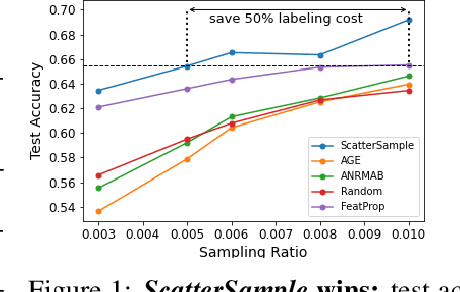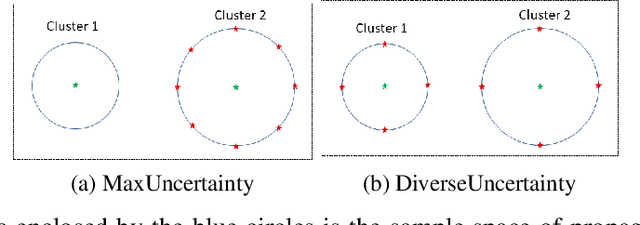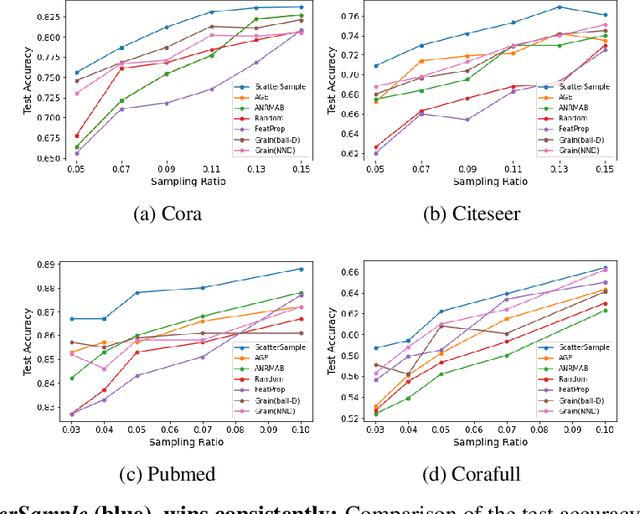Vasileios Ioannidis
ScatterSample: Diversified Label Sampling for Data Efficient Graph Neural Network Learning
Jun 09, 2022



Abstract:What target labels are most effective for graph neural network (GNN) training? In some applications where GNNs excel-like drug design or fraud detection, labeling new instances is expensive. We develop a data-efficient active sampling framework, ScatterSample, to train GNNs under an active learning setting. ScatterSample employs a sampling module termed DiverseUncertainty to collect instances with large uncertainty from different regions of the sample space for labeling. To ensure diversification of the selected nodes, DiverseUncertainty clusters the high uncertainty nodes and selects the representative nodes from each cluster. Our ScatterSample algorithm is further supported by rigorous theoretical analysis demonstrating its advantage compared to standard active sampling methods that aim to simply maximize the uncertainty and not diversify the samples. In particular, we show that ScatterSample is able to efficiently reduce the model uncertainty over the whole sample space. Our experiments on five datasets show that ScatterSample significantly outperforms the other GNN active learning baselines, specifically it reduces the sampling cost by up to 50% while achieving the same test accuracy.
TGL: A General Framework for Temporal GNN Training on Billion-Scale Graphs
Mar 28, 2022



Abstract:Many real world graphs contain time domain information. Temporal Graph Neural Networks capture temporal information as well as structural and contextual information in the generated dynamic node embeddings. Researchers have shown that these embeddings achieve state-of-the-art performance in many different tasks. In this work, we propose TGL, a unified framework for large-scale offline Temporal Graph Neural Network training where users can compose various Temporal Graph Neural Networks with simple configuration files. TGL comprises five main components, a temporal sampler, a mailbox, a node memory module, a memory updater, and a message passing engine. We design a Temporal-CSR data structure and a parallel sampler to efficiently sample temporal neighbors to formtraining mini-batches. We propose a novel random chunk scheduling technique that mitigates the problem of obsolete node memory when training with a large batch size. To address the limitations of current TGNNs only being evaluated on small-scale datasets, we introduce two large-scale real-world datasets with 0.2 and 1.3 billion temporal edges. We evaluate the performance of TGL on four small-scale datasets with a single GPU and the two large datasets with multiple GPUs for both link prediction and node classification tasks. We compare TGL with the open-sourced code of five methods and show that TGL achieves similar or better accuracy with an average of 13x speedup. Our temporal parallel sampler achieves an average of 173x speedup on a multi-core CPU compared with the baselines. On a 4-GPU machine, TGL can train one epoch of more than one billion temporal edges within 1-10 hours. To the best of our knowledge, this is the first work that proposes a general framework for large-scale Temporal Graph Neural Networks training on multiple GPUs.
 Add to Chrome
Add to Chrome Add to Firefox
Add to Firefox Add to Edge
Add to Edge